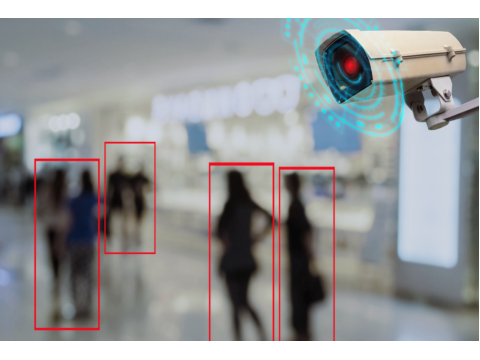Motion Sensor Surveillance Cameras: Efficiency and Applications
Motion sensor cameras enhance surveillance systems by improving storage efficiency and offering immediate alerts. Whether for home, office, or remote locations, they are a versatile choice for modern security needs.
Key Features of Motion Sensor Cameras
Recording Optimization
- Motion detection triggers recording only when activity is detected, saving storage space.
Security Alerts
- Integrated with alarm systems to notify users of unauthorized movements.
Types of Motion Detection
- Software-Based: Analyzes changes in the camera's video feed, offering greater accuracy and customizable detection zones.
- Hardware-Based: Utilizes infrared (IR) sensors to detect physical movement by changes in thermal energy.
Cameras with Motion Detection and Recording
IP Cameras with Motion Detection
- Feature software-based motion detection.
- Ideal for networked systems with internet access, enabling remote monitoring and alerts.
- Suitable for homes, offices, and spaces with high data traffic, thanks to optimized bandwidth usage.
Standalone Cameras with Built-In Storage
- Equipped with SD card slots for local recording.
- Cost-effective for small-scale setups, such as shops or vacation homes.
- Often used for discreet, temporary surveillance setups.
Methods of Motion Detection
Software-Based Detection
- Advantages:
- Precise zone customization to exclude non-critical areas.
- Minimal false alarms from environmental factors like tree branches or passing vehicles.
- Best For:
- Outdoor monitoring where controlled detection zones are crucial.
Hardware-Based Detection
- Advantages:
- Cost-effective and simple to install.
- Effective in indoor spaces with stable thermal conditions.
- Limitations:
- Prone to false triggers from thermal variations (e.g., heaters or warm air vents).
- Best For:
- Indoor security in homes or seasonal properties.
Applications of Motion Sensor Cameras
Residential Use
- Monitor unauthorized access to private properties.
- Efficient for homes with intermittent occupancy, such as vacation houses.
Business and Retail
- Ideal for shops and offices to monitor critical areas after hours.
- Provides evidence in case of theft or intrusion.
Remote Locations
- Suitable for properties like farms or storage facilities.
- Hardware-based motion cameras often suffice in such cases.
Practical Recommendations
- For Indoor Use: Hardware-based cameras are effective and affordable.
- For Outdoor Use: Opt for software-based detection with adjustable zones to avoid unnecessary triggers.
- For High-Security Needs: Combine motion detection with video analytics for optimal performance.
Motion detection cameras offer flexibility and efficiency for a wide range of security applications. By understanding their features and choosing the right type, you can build a surveillance system tailored to your needs.
Home Security Cameras
11/01/2025
Surveillance Cameras with Recording
11/01/2025

